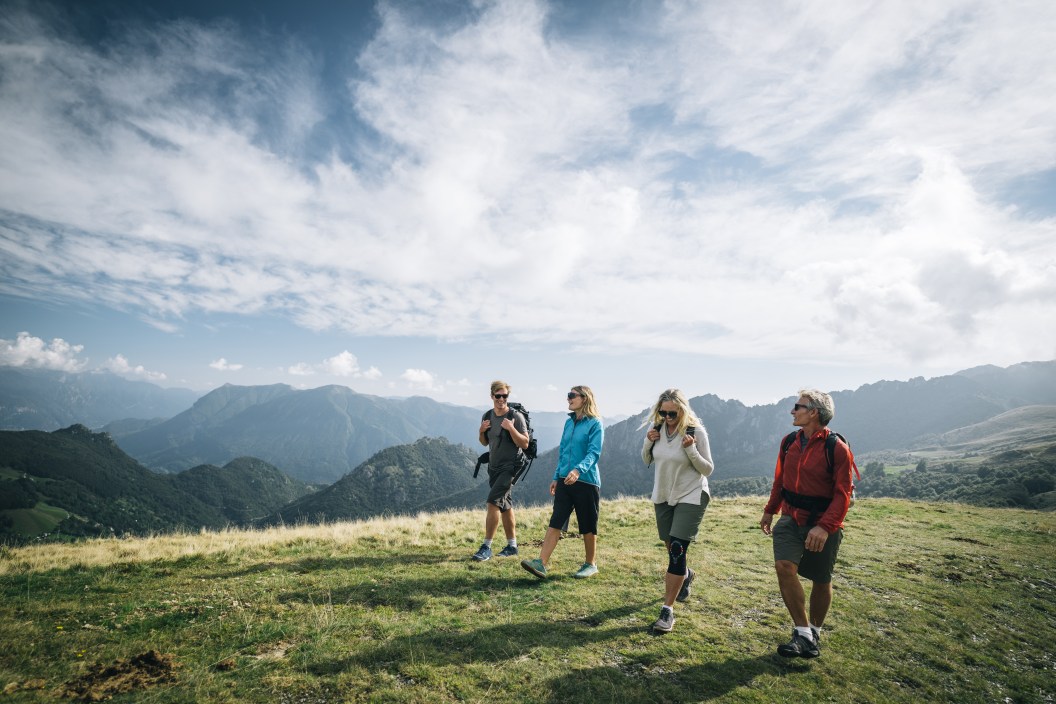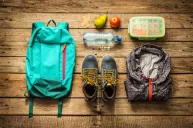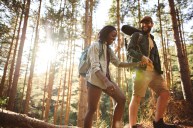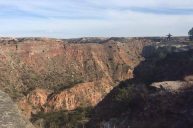Hiking may be one of the most easily-accessible outdoor activities, but for far too long, hiking has been painted as a physically-demanding activity that requires a certain physique or fitness level. Now, people are starting to challenge the notion that conquering trails and rocky terrain needs to be hard.
Enter: Soft hiking.
Coined on TikTok by two England-based hikers, Emily Thorton and Lucy Hird, soft hiking embraces the idea that trekking doesn't have to require intense physical exertion.
Instead, it can encompass an intuitive style of hiking that prioritizes listening to your body, meandering more slowly, and enjoying the scenic views of nature.
"Soft hiking is about the pure joy of spending time in nature and moving your body. It's important to take breaks, eat, and actually take in your surroundings," Thornton and Hird explain in a TikTok video. "Make some time to go off trail and be present in the moment. There's no need to rush." In other words, hiking doesn't have to be super serious to be worth doing.
@softgirlswhohike Replying to @LousLife good question! we kind of coined the term ourselves. heres what it?s all about ? #girlswhohike #hikinguk #hiketok #bestfriends #softhiking #softgirlswhohike #softlife
Softer forms of exercise (think: "hot girl walks") have ballooned in popularity since the pandemic, challenging the idea that exercise needs to result in burning a certain amount of calories or getting to the top of a mountain as quickly as possible.
"We've been on hikes before with seasoned hikers, and we just felt we weren't good enough, strong enough, or fit enough to keep up," Thornton and Hird say in the video.
Soft hiking is expanding the image of who a hiker is, making it more inclusive for all.
READ MORE: Unlikely Hikers x Merrell Are Hosting an Inclusive Hiking Series Across the U.S.
It can also make hiking, and movement in general, a more enjoyable experience that you'll actually want to stick with. Morgan Fielder, DPT, an adventure travel writer and clinical research coordinator who has studied exercise adherence, says that fitness and wellness should be about finding something you love to do and sticking with it year over year. "Extreme and faddish exercise generally tends to hurt people more than it helps," says Dr. Fielder.
Soft hiking offers an alternative to the more vigorous style of trekking that can allow more people to adapt long-term.
Clearly, the message is resonating: Since their first post on the topic, Thorton and Hird have garnered more than 398,000 views and nearly 65,000 likes. One commenter wrote: "Love this! I've wanted to get more into hiking but I prefer going at my own pace. Love the term soft hiking!"
Even if you're a hiking enthusiast who loves a challenging trail, there's a valuable lesson here. As of late, this ideology of "softness" has taken over social media feeds and transcends fitness. In general, people are embracing "softer lives," be it spending time alone, extending oneself grace when life gets tough, or cherishing the little moments.
If there's anything to take away from soft hiking, it's that your adventures don't have to be about reaching your destination with max type 2 fun—any hike, whether a walk in the woods or scaling a 14er, is worth your effort if you're enjoying the journey.
READ MORE: Women's Solo Hiking Guide: How to Stay Safe When Alone on Trail




